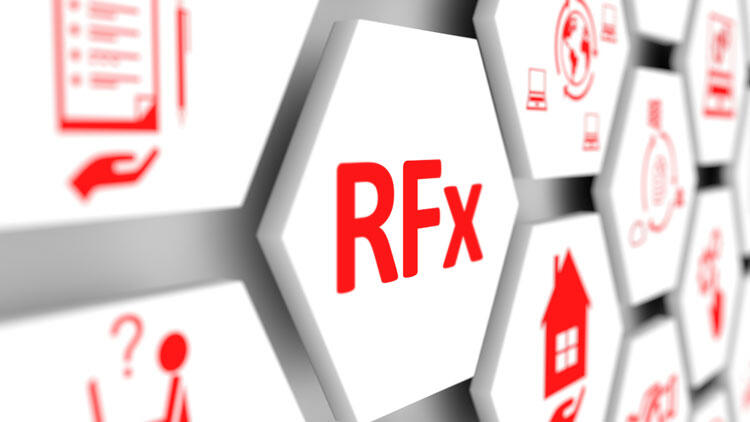
Crises reveal flaws in an organization’s value chain and the recent global pandemic is just one of many disruptive events, including Brexit, trade tensions, and economic instability, highlighting these weaknesses. The critical outcome of software’s growing importance in hardware-driven industries is a rapid increase in manufacturers’ software spending. According to a McKinsey report, the automotive sector spending on software and electronics is projected to reach $469 billion (about $1,400 per person in the US) by 2030, almost double the $238 billion (about $730 per person in the US) spent in 2020.
Due to a lack of engineering knowledge and the existence of siloed procurement operations, traditional techniques of software procurement are insufficient. Spreadsheets are given to engineers and stakeholders in RFx alone, then they are combined and sent back to the suppliers. These elements raise the likelihood of cost and schedule overruns and make it difficult to evaluate expenditures.
The Risks of Using Excel for Your RFPs
Effective procurement is made more difficult by the software industry’s elevated levels of lock-in and reliance on a single provider for mission-critical knowledge. The top performers in each industry adopt a comprehensive strategy that combines best-in-class activities in supplier contacts, mindsets, tools, and procurement’s organizational role. Top performers are great at working together internally, using data and cost-modeling tools, empowering procurement teams, and having a thorough understanding of software architecture and market conditions.
The use of an Excel form for the Request for Proposal (RFP) process can be considered horrible for several reasons:
- Limited Collaboration: Excel forms lack the ability to allow multiple parties to collaborate and work on the same document simultaneously, making it difficult to coordinate with suppliers and other stakeholders.
- Inefficient: The manual nature of Excel can lead to time-consuming and repetitive tasks, such as data entry, formatting, and consolidation of information.
- Error-Prone: Excel is prone to errors, such as incorrect data entry or formulas, and there are limited ways to ensure data accuracy and consistency.
- Limited Reporting: Excel has limited reporting and analytics capabilities, making it difficult to track the progress of procurement initiatives and make informed decisions.
- Security Concerns: Excel documents can easily be shared, copied, or deleted, making it challenging to secure sensitive information.
Importance of an RFx Application
Why is having RFx software important? What can you do to make the future better?
- Improved efficiency: RFx software automates many of the manual processes involved in RFx, such as creating and distributing RFPs, receiving and evaluating proposals, and tracking progress. This can help businesses to save time and resources.
- Increased accuracy: RFx software helps to ensure that all proposals are evaluated in a consistent and objective manner, reducing the risk of human error and bias.
- Better collaboration: RFx software can help businesses to collaborate with suppliers, stakeholders, and team members in real-time, which can lead to faster and more efficient decision-making.
- Improved reporting: RFx software provides businesses with real-time insights and analytics, which can help to track progress, identify trends and patterns, and make data-driven decisions.
Improved Supplier Relationship Management
COVID-induced supply chain problems have taught us one major thing when it comes to supply chain- your relationship with your supplier is ever so important. At the end of the day, not everyone will end up having relationships like Apple with TSMC, but better supplier management can determine the success of both companies. The importance of supplier management lies in its ability to drive cost savings, improve product quality, foster innovation, and minimize supply chain disruptions. By regularly monitoring supplier performance and maintaining strong supplier relationships, organizations can ensure the smooth functioning of their supply chain, reduce procurement costs, and stay ahead of the competition. Moreover, effective supplier management enables organizations to identify potential risks and take proactive measures to address them, reducing the likelihood of supply chain disruptions and preserving business continuity. In short, supplier management is a critical aspect of successful business operations and should be given the attention it deserves.
RFx software plays a critical role in a company’s success by providing a streamlined and efficient procurement process. It automates and standardizes the request for proposal/quotation process, enabling procurement teams to easily create, distribute, and manage requests for quotes from suppliers. The software also provides a centralized location for all quotes to be stored, evaluated, and compared, allowing procurement teams to make informed sourcing decisions and negotiate better contracts. The reporting and analytics capabilities of RFx software help organizations gain insights into supplier performance, enabling them to improve supplier relationships and reduce costs. By leveraging the benefits of RFx software, organizations can improve their procurement processes, minimize supply chain disruptions, increase cost savings, and foster innovation, leading to better overall business performance.
Check out Gainfront’s Strategic Sourcing for more on how to build an intuitive process.

Rahul Asthana has a PhD in Operations Management from the Anderson School at UCLA. He has 25 years of experience in supply chain management, starting his career in IBM working in supply chain operations. He then moved into product management and product marketing of supply chain software while at SAP and Oracle. He manages product strategy and product management at Gainfront. In terms of hobbies outside of work, he really enjoys tennis. Follow Rahul Asthana on Linkedin!


